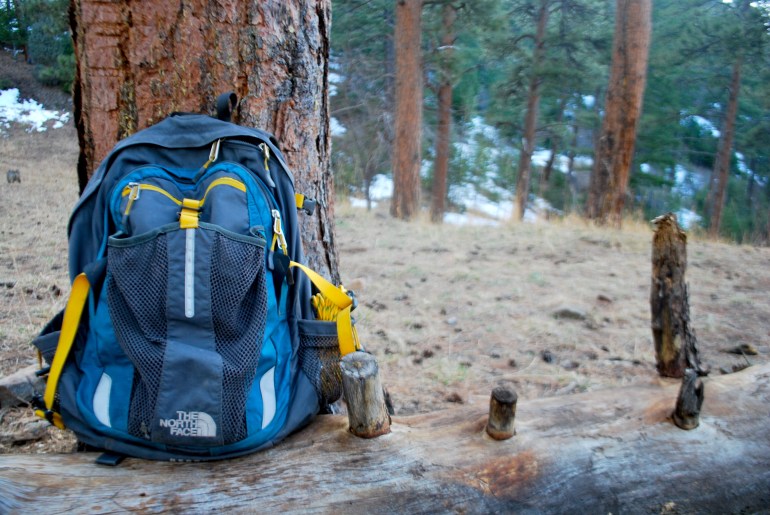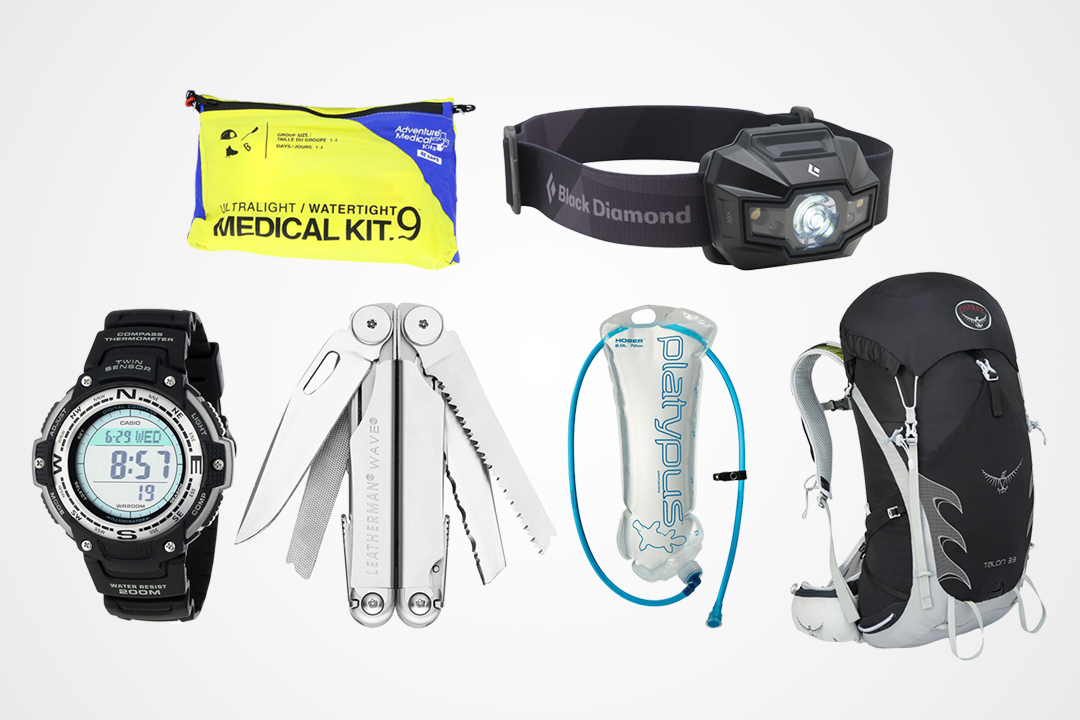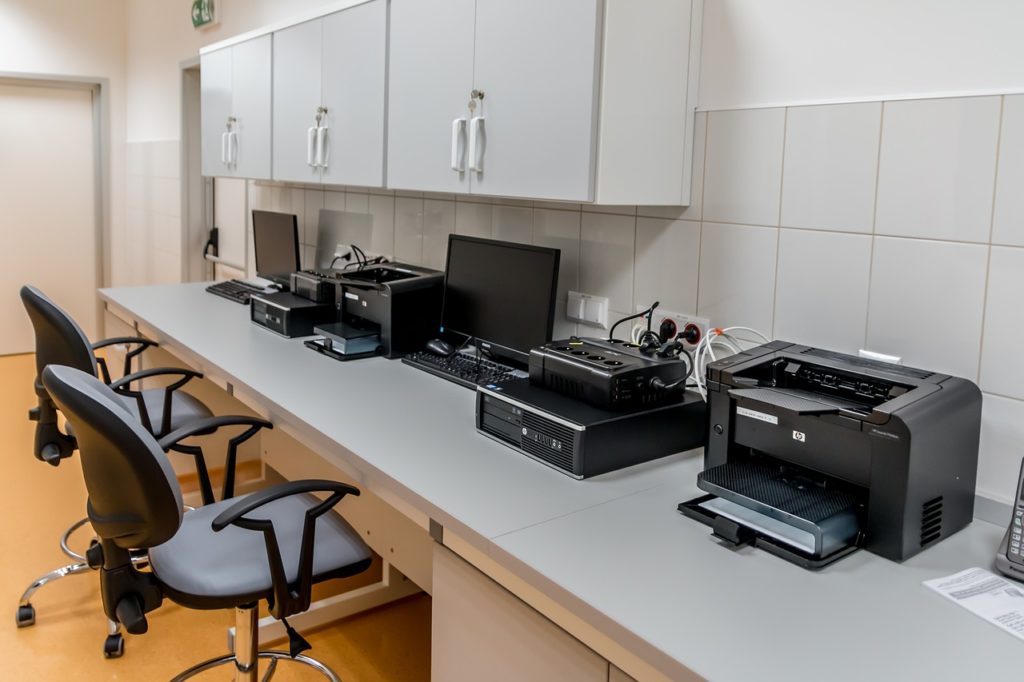Working at Heights Training Course: What to Expect

Working at heights is an essential part of many industries, from construction to maintenance. However, it comes with its share of risks that can easily lead to final destination or fatal injuries if not managed properly. That’s where working at heights training becomes invaluable. Whether you’re a seasoned professional or someone in the field, understanding what training for work at height (elevated work safety) offers can make all the difference in ensuring safety on the job.
So, what can you expect from a comprehensive working at heights training course? Here, you’ll take a glimpse of the key components that will equip you with vital skills and knowledge for your next high-altitude task.
Comprehensive Risk Assessment Training
Comprehensive risk assessment training is the backbone of working at heights safely. It starts with learning how to spot potential hazards associated with elevated work environments. Attendees learn to identify risks such as unstable surfaces, weather conditions, and equipment failures.
Participants are taught how to evaluate these risks based on their likelihood and potential impact. This critical thinking process helps in determining appropriate control measures that can be implemented before starting any task.
Proper Use of Safety Equipment
In this section, you’ll learn how to familiarize yourself with your gear. Harnesses, lanyards, and helmets are not just accessories; they serve specific purposes. Each piece must fit correctly to provide maximum protection.
You can also expect how to ensure all equipment is well-maintained. Regular inspections help identify wear and tear before it becomes an issue. If you notice any damage or defects, address them immediately. Training sessions often include hands-on practice with safety gear. Pay attention during these exercises—this experience builds confidence in using the equipment correctly when it matters most.
Fall Prevention Techniques

Fall prevention techniques are crucial for anyone working at heights. Being familiar with these methods means a lower risk of accidents and injuries. One key technique is using guardrails. They create a physical barrier that prevents workers from accidentally stepping off edges.
Another effective strategy involves harness systems. When worn correctly, these devices keep individuals secure while they work on elevated surfaces. Training in proper ladder usage is also essential. Knowing how to set up and climb ladders safely can make all the difference in avoiding falls.
Emergency Response Procedures
When working at heights, knowing how to react in a crisis can definitely save lives. During training, participants learn to assess emergencies quickly. This includes identifying potential hazards and understanding their immediate environment. Communication is key in these situations. Clear protocols for alerting coworkers or supervisors save precious time. Having designated roles during an emergency ensures that everyone knows what to do. Practical drills simulate real-life scenarios. Participants practice evacuating safely and effectively while maintaining composure under pressure.
Understanding first aid basics also plays a vital role in injury management until professional help arrives. Tools like rescue equipment may be covered as well, ensuring familiarity with gear that could be critical during an emergency situation. The goal is to foster confidence and readiness, so every participant leaves feeling equipped to handle unexpected events on the job site.
Practical, Real-World Scenarios
You’ll also get real-world training. This hands-on approach basically bridges the gap between theory and practice. Participants engage in simulations that mirror actual workplace conditions. They learn to identify hazards specific to their job site while navigating elevated surfaces.
By recreating challenging situations, trainees develop critical thinking skills essential for safety. They practice making decisions under pressure, enhancing their preparedness for unexpected events. Role-playing exercises foster teamwork as participants collaborate on safety solutions. This camaraderie builds trust and reinforces communication among team members.…









 Studies have shown that probiotics can help regulate appetite and reduce calorie intake, leading to weight loss. Probiotics stimulate the production of hormones such as GLP-1 and PYY, which control appetite and promote feelings of fullness.
Studies have shown that probiotics can help regulate appetite and reduce calorie intake, leading to weight loss. Probiotics stimulate the production of hormones such as GLP-1 and PYY, which control appetite and promote feelings of fullness.
 Stress and anxiety can lead to weight gain, especially in the abdominal region. When you are stressed, your body produces a hormone known as cortisol, which can increase appetite and promote fat storage in the abdominal area. Probiotics can help reduce stress and anxiety by regulating the production of cortisol and promoting the production of mood-boosting neurotransmitters such as serotonin and dopamine.
Stress and anxiety can lead to weight gain, especially in the abdominal region. When you are stressed, your body produces a hormone known as cortisol, which can increase appetite and promote fat storage in the abdominal area. Probiotics can help reduce stress and anxiety by regulating the production of cortisol and promoting the production of mood-boosting neurotransmitters such as serotonin and dopamine.
 One of the most common uses for pc tune-up software is to fix errors on your computer. If you have ever had a “blue screen of death” or seen strange error messages, then you know how frustrating it can be. With pc tune-up software, you can scan your computer for errors and fix them with just a few clicks. This can help improve your computer’s stability and performance.
One of the most common uses for pc tune-up software is to fix errors on your computer. If you have ever had a “blue screen of death” or seen strange error messages, then you know how frustrating it can be. With pc tune-up software, you can scan your computer for errors and fix them with just a few clicks. This can help improve your computer’s stability and performance. One of the most common uses for pc tune-up software is to defragment your hard drive. Over time, the hard drive can become fragmented, which slows down computer. Pc tune-up software can help defragment your hard drive and improve its performance. There are many common uses for pc tune-up software. If you are tired of your computer running slow or having problems with your hard drive, you may need to use pc tune-up software.
One of the most common uses for pc tune-up software is to defragment your hard drive. Over time, the hard drive can become fragmented, which slows down computer. Pc tune-up software can help defragment your hard drive and improve its performance. There are many common uses for pc tune-up software. If you are tired of your computer running slow or having problems with your hard drive, you may need to use pc tune-up software.
 Besides freedom and organization, fly fishing vests keep you comfortable during your venture. They are specifically designed to disperse the weight of your gear, so you don’t have to worry about feeling weighed down. Vests also have a lot of padding, which can help protect you from bumps and bruises. Using a regular fishing vest can help you avoid back pain and other discomforts.
Besides freedom and organization, fly fishing vests keep you comfortable during your venture. They are specifically designed to disperse the weight of your gear, so you don’t have to worry about feeling weighed down. Vests also have a lot of padding, which can help protect you from bumps and bruises. Using a regular fishing vest can help you avoid back pain and other discomforts.
 One of the great things about slogan t-shirts is that they can be a friend of feminism. Slogans like “The Future is Female” or “Girl Power” send a strong message that you support women’s rights. Wearing a feminist slogan t-shirt is an easy way to show your solidarity with the cause.
One of the great things about slogan t-shirts is that they can be a friend of feminism. Slogans like “The Future is Female” or “Girl Power” send a strong message that you support women’s rights. Wearing a feminist slogan t-shirt is an easy way to show your solidarity with the cause. Another great reason to wear slogan t-shirts is that they can help you stand out from the crowd. If you’re tired of blending in, wearing a shirt with a catchy slogan is a great way to get noticed. For example, if you’re at a party and want to make new friends, wearing a shirt that says “I’m the life of the party” is a great way to get people to talk to you.
Another great reason to wear slogan t-shirts is that they can help you stand out from the crowd. If you’re tired of blending in, wearing a shirt with a catchy slogan is a great way to get noticed. For example, if you’re at a party and want to make new friends, wearing a shirt that says “I’m the life of the party” is a great way to get people to talk to you.
 The tech sector is constantly evolving, so it’s important to research which companies are worth investing in. Just because a company is classified as part of the tech industry doesn’t mean that it will be successful. Look at each company’s financials, competitive landscape, and long-term prospects.
The tech sector is constantly evolving, so it’s important to research which companies are worth investing in. Just because a company is classified as part of the tech industry doesn’t mean that it will be successful. Look at each company’s financials, competitive landscape, and long-term prospects. Just because you invest in tech stocks doesn’t mean that you’ll be instantly rich. It would help if you had realistic expectations regarding investing, whether it’s in the stock market or anything else. If your goal is to make money quickly and easily, this probably isn’t the best option.
Just because you invest in tech stocks doesn’t mean that you’ll be instantly rich. It would help if you had realistic expectations regarding investing, whether it’s in the stock market or anything else. If your goal is to make money quickly and easily, this probably isn’t the best option.
 Word Finder is an online tool that helps you find words. You can type in all the letters of a specific term, and Word Finder will show you which words exist with those letters by providing their list, along with corresponding point values if it exists in the Scrabble dictionary. Unscrambler is an online tool that helps you unscramble a word by providing its original form. This tool can be beneficial when playing word games like Scrabble or Words With Friends, as it can show you all of the possible words that you can make with the letters in your hand.
Word Finder is an online tool that helps you find words. You can type in all the letters of a specific term, and Word Finder will show you which words exist with those letters by providing their list, along with corresponding point values if it exists in the Scrabble dictionary. Unscrambler is an online tool that helps you unscramble a word by providing its original form. This tool can be beneficial when playing word games like Scrabble or Words With Friends, as it can show you all of the possible words that you can make with the letters in your hand. The benefits of using Word Finder and Unscrambler are pretty straightforward. These tools can help you in a variety of different ways, whether you’re playing word games or need some help finding words. They’re both easy to use and free, so there’s no reason not to check them out! Moreover, Word Finder and Unscrambler are great for kids who need help with their spelling or vocabulary, as they can teach your child how to find words in a dictionary. Or, if you’re an adult looking for some assistance on the job, these tools could also come in handy when writing reports or memos. These tools will benefit anyone at any age!
The benefits of using Word Finder and Unscrambler are pretty straightforward. These tools can help you in a variety of different ways, whether you’re playing word games or need some help finding words. They’re both easy to use and free, so there’s no reason not to check them out! Moreover, Word Finder and Unscrambler are great for kids who need help with their spelling or vocabulary, as they can teach your child how to find words in a dictionary. Or, if you’re an adult looking for some assistance on the job, these tools could also come in handy when writing reports or memos. These tools will benefit anyone at any age! Although you can hire translators from any part of the world, it would be best to work with native translators. For example, you could spend less to hire a translator in India to translate your content from English to French, but you stand to benefit more if you work with a native French linguist.
Although you can hire translators from any part of the world, it would be best to work with native translators. For example, you could spend less to hire a translator in India to translate your content from English to French, but you stand to benefit more if you work with a native French linguist. As you choose a suitable translating agency, the chances are that you focus mainly on the mastery of the two languages you are interested in at that moment. However, looking for an agency that serves many languages would be thinking ahead. Perhaps, as a business, you could need to enter other markets in the world. Therefore, working with a translation agency with experts in all the major world languages could save you the headache of looking for a new agency. Also, you are better off working with one company than several of them. It will save you so much hassle.
As you choose a suitable translating agency, the chances are that you focus mainly on the mastery of the two languages you are interested in at that moment. However, looking for an agency that serves many languages would be thinking ahead. Perhaps, as a business, you could need to enter other markets in the world. Therefore, working with a translation agency with experts in all the major world languages could save you the headache of looking for a new agency. Also, you are better off working with one company than several of them. It will save you so much hassle.
 The first factor that will help you get the ideal photographer is the quality of their work. Before making a choice, it will be wise to check the portfolio of a given photographer. Most wedding photographers tend to put their work online.
The first factor that will help you get the ideal photographer is the quality of their work. Before making a choice, it will be wise to check the portfolio of a given photographer. Most wedding photographers tend to put their work online.





 After choosing the right service to provide, the next step is to find a good service provider to buy from. Since there might be many providers, you might find it challenging to choose the most suitable.
After choosing the right service to provide, the next step is to find a good service provider to buy from. Since there might be many providers, you might find it challenging to choose the most suitable. The last step you should consider is finding the right online platforms to market your drop servicing business and connect with your clients. You should begin by having a domain name and creating a website. To reach many people and make a profit, you should create a marketing strategy with great results.
The last step you should consider is finding the right online platforms to market your drop servicing business and connect with your clients. You should begin by having a domain name and creating a website. To reach many people and make a profit, you should create a marketing strategy with great results.
 Many people who seek astrological readings or other forms of divinatory counsel are mostly after answers on matters revolving around money, power, and sex. Maybe, this is because humans desire to have influence, feel loved and satisfied sexually, and desire lots of wealth, which is connected with control (power). People will most want to ask the astrologers why they seem unlucky in love matter, what they can do to be more influential or why they don’t seem to be building wealth.
Many people who seek astrological readings or other forms of divinatory counsel are mostly after answers on matters revolving around money, power, and sex. Maybe, this is because humans desire to have influence, feel loved and satisfied sexually, and desire lots of wealth, which is connected with control (power). People will most want to ask the astrologers why they seem unlucky in love matter, what they can do to be more influential or why they don’t seem to be building wealth. Using astrology, people get the advice they can tap on to make some crucial life decisions. The expert chart readers do not make decisions for the clients but reveal some in-depth information to them, and it is for them to use the information as they find okay and helpful.
Using astrology, people get the advice they can tap on to make some crucial life decisions. The expert chart readers do not make decisions for the clients but reveal some in-depth information to them, and it is for them to use the information as they find okay and helpful.
 You will find this to be easier said than done. That is because there are few programmers who can complete a program in a few attempts. You have to sit around as you try to understand why certain errors keep popping up. Other than being time-consuming, it can be frustrating. That explains why some students quit programming. If you are contemplating quitting, you should note that quitting is not an option. Rather, you should take breaks when you feel you have reached the dead end.
You will find this to be easier said than done. That is because there are few programmers who can complete a program in a few attempts. You have to sit around as you try to understand why certain errors keep popping up. Other than being time-consuming, it can be frustrating. That explains why some students quit programming. If you are contemplating quitting, you should note that quitting is not an option. Rather, you should take breaks when you feel you have reached the dead end. Studies have shown that most students are hesitant to ask questions. Some students find it silly and think they can be judged for asking questions. However, it is advisable to seek help to ensure your doubts are cleared. Also, you can gain clarity of various concepts that are likely to trouble you.…
Studies have shown that most students are hesitant to ask questions. Some students find it silly and think they can be judged for asking questions. However, it is advisable to seek help to ensure your doubts are cleared. Also, you can gain clarity of various concepts that are likely to trouble you.…
 One obvious advantage of choosing an office cleaning company with many years of experience is that they know what they are doing. They can work with little instructions and supervision. Since they have been in the business for a long time, you can trust that they can truly be a master of the game.
One obvious advantage of choosing an office cleaning company with many years of experience is that they know what they are doing. They can work with little instructions and supervision. Since they have been in the business for a long time, you can trust that they can truly be a master of the game. Go for a Company That Allows Flexibility
Go for a Company That Allows Flexibility
 You need to determine all associated costs involved in hiring a catering service. It is advisable to contact several catering companies and ask for quotes. In this way, you can have an idea of what value the company provides you. If you have a limited budget, it is necessary to inform catering companies in advance. In this way, they can come up with a menu that suits your budget.
You need to determine all associated costs involved in hiring a catering service. It is advisable to contact several catering companies and ask for quotes. In this way, you can have an idea of what value the company provides you. If you have a limited budget, it is necessary to inform catering companies in advance. In this way, they can come up with a menu that suits your budget.



 The type of exercise you do, the diet you feed on, and your overall physical condition can affect your psychic ability. When your mind is in the best state possible, you will significantly improve your psychic ability. That comprises of things like no alcohol consumption and no smoking. When you implement specific exercises, it can help you improve your psychic power in the long term.
The type of exercise you do, the diet you feed on, and your overall physical condition can affect your psychic ability. When your mind is in the best state possible, you will significantly improve your psychic ability. That comprises of things like no alcohol consumption and no smoking. When you implement specific exercises, it can help you improve your psychic power in the long term. Psychic abilities are never for people who are gifted alone. You can always register for the psychic in certified schools that offer classes to learn at your own pace and train at home. There are several psychic classes currently being offered online. The courses cover different subjects; hence, with little research, you will be in a position of getting one that suits you.
Psychic abilities are never for people who are gifted alone. You can always register for the psychic in certified schools that offer classes to learn at your own pace and train at home. There are several psychic classes currently being offered online. The courses cover different subjects; hence, with little research, you will be in a position of getting one that suits you. It is vital for the body always to have a relaxed state of mind. You can still use to help you improve on your psychic abilities by implementing the regular meditation practice. The psychic abilities, when at its core, can be attuned to the spirit.
It is vital for the body always to have a relaxed state of mind. You can still use to help you improve on your psychic abilities by implementing the regular meditation practice. The psychic abilities, when at its core, can be attuned to the spirit.
 With unforeseen circumstances, it is difficult to be fully prepared. However, a person can take the required steps to ensure that whatever happens, you have a backup plan. Psychic readings can help you prepare for such situations as you are armed with the knowledge and avoid actions that are likely to cause harm.
With unforeseen circumstances, it is difficult to be fully prepared. However, a person can take the required steps to ensure that whatever happens, you have a backup plan. Psychic readings can help you prepare for such situations as you are armed with the knowledge and avoid actions that are likely to cause harm.
 Weight is among the first things that you need to consider when buying a golf driver. It is essential to note that drivers range from 275 to 310 grams. Even if some can be as light 265 grams, ensure that you find the lightweight one. Most of the manufacturers have focused on producing lightweight golf drivers to help to increase the clubhead speed. Also, most golfers benefit from having a portable driver because they provide the most distance off the tee.
Weight is among the first things that you need to consider when buying a golf driver. It is essential to note that drivers range from 275 to 310 grams. Even if some can be as light 265 grams, ensure that you find the lightweight one. Most of the manufacturers have focused on producing lightweight golf drivers to help to increase the clubhead speed. Also, most golfers benefit from having a portable driver because they provide the most distance off the tee. It is critical to understand that golf drivers are designed with a vast or large clubhead to offer a sizable sweet spot. That is why you will realize that they come up with various sizes. However, the maximum size that is allowed is 46o cubic centimeters. It is the most standard size of a driver with new players or amateurs because it produces more forgiveness on off-center shots.
It is critical to understand that golf drivers are designed with a vast or large clubhead to offer a sizable sweet spot. That is why you will realize that they come up with various sizes. However, the maximum size that is allowed is 46o cubic centimeters. It is the most standard size of a driver with new players or amateurs because it produces more forgiveness on off-center shots.





 If you produce more rubbish in a day, garbage collection should be daily. But if you live alone and do most of your activities outside like dining, you can schedule rubbish collection sparingly. The schedule of rubbish removal should always be followed. Delayed garbage collection will not only be inconvenient for you, but it can also make your living quarter look untidy and unkempt. It will be of great help if you find a service company that can quickly remove your rubbish.
If you produce more rubbish in a day, garbage collection should be daily. But if you live alone and do most of your activities outside like dining, you can schedule rubbish collection sparingly. The schedule of rubbish removal should always be followed. Delayed garbage collection will not only be inconvenient for you, but it can also make your living quarter look untidy and unkempt. It will be of great help if you find a service company that can quickly remove your rubbish. Affordable Rates
Affordable Rates





 Whenever you store your possessions at any given storage facility, you can expect them to be quite safe. To ensure your items are not stolen, ensure you choose a facility that has tight security. It should have an access gate, security cameras, and lighting.
Whenever you store your possessions at any given storage facility, you can expect them to be quite safe. To ensure your items are not stolen, ensure you choose a facility that has tight security. It should have an access gate, security cameras, and lighting.

 Professional translators are known for their experience in translation service. They may not master all languages in the world, but their expertise in specific languages make them the experts that are worth considering. In linguistic-related subjects, the differences between sentences and utterance are essential. It is why experience is a vital aspect of the service. The truth is that many people fail to link the words to the related social contexts due to the absence of experience. As an example, academic language is indeed different from daily conversations. Dictions and phrases are also something you should not miss. For that reason, it is advisable to find a translator who has been in the business for years since it indicates their credibility and ability.
Professional translators are known for their experience in translation service. They may not master all languages in the world, but their expertise in specific languages make them the experts that are worth considering. In linguistic-related subjects, the differences between sentences and utterance are essential. It is why experience is a vital aspect of the service. The truth is that many people fail to link the words to the related social contexts due to the absence of experience. As an example, academic language is indeed different from daily conversations. Dictions and phrases are also something you should not miss. For that reason, it is advisable to find a translator who has been in the business for years since it indicates their credibility and ability.
 If you want something portable, then you ought to consider a laptop with a small screen. Most laptops are designed to be slim and light. You should opt for a 10-13-inch ultrabook that weighs less than four pounds. On the other hand, if you are a regular traveller, you can get laptops such as Dell XPS 13 that weighs less than 3 pounds and has decent battery life. Also, the grey and black model can be snazzy.
If you want something portable, then you ought to consider a laptop with a small screen. Most laptops are designed to be slim and light. You should opt for a 10-13-inch ultrabook that weighs less than four pounds. On the other hand, if you are a regular traveller, you can get laptops such as Dell XPS 13 that weighs less than 3 pounds and has decent battery life. Also, the grey and black model can be snazzy. The processor is an important component as it is the brain of the laptop. It does not matter whether you are opening a file or pressing a key; the processor will execute the command. For simple tasks such as surfing the web, it is a good idea to get a dual-core processor. That allows you to have several apps and windows at once. Although dual-core CPUs are ideal for multitasking, they are not ideal for tasks such as photo editing or gaming.
The processor is an important component as it is the brain of the laptop. It does not matter whether you are opening a file or pressing a key; the processor will execute the command. For simple tasks such as surfing the web, it is a good idea to get a dual-core processor. That allows you to have several apps and windows at once. Although dual-core CPUs are ideal for multitasking, they are not ideal for tasks such as photo editing or gaming.
 Check the school’s website or even call their financial aid office. Check the qualifications, and if you meet them, find out how you can apply. You should not assume that by applying for admission, you simultaneously apply for the scholarship. Usually, it is a separate process. You should note that the scholarship deadlines are quite different from those set for college admission application. For instance, some colleges ask applicants to submit an application for a scholarship before applying for admission. It is advisable to increase your test scores in high school and raise your GPA to increase your chances of merit aid.
Check the school’s website or even call their financial aid office. Check the qualifications, and if you meet them, find out how you can apply. You should not assume that by applying for admission, you simultaneously apply for the scholarship. Usually, it is a separate process. You should note that the scholarship deadlines are quite different from those set for college admission application. For instance, some colleges ask applicants to submit an application for a scholarship before applying for admission. It is advisable to increase your test scores in high school and raise your GPA to increase your chances of merit aid. In this case, it is vital that you become as specific as possible. Just typing
In this case, it is vital that you become as specific as possible. Just typing 



